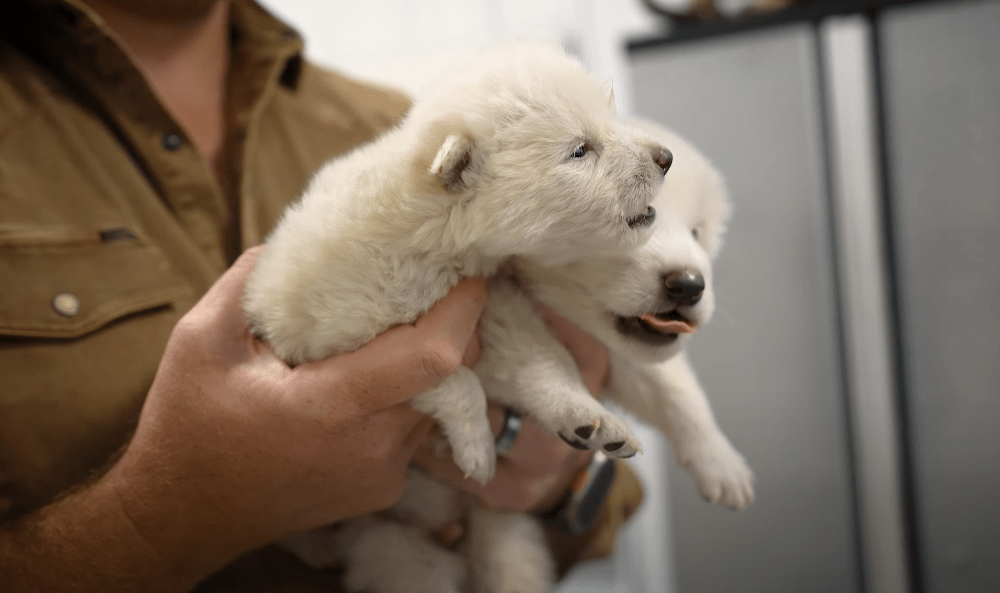In an era marked by the climatic crisis and the loss of biodiversity, science responds with an unprecedented revolution: bringing out extinct species back to life. This article tells the visionary company of Colossal Biosciences and the return of prehistoric wolves to the world scene
Colossal Biosciences rewrites the fate of extinction: two prehistoric wolves brought back to life
Extinction is no longer an inevitable fate. For Colossal BiosciencesAmerican society of biotechnology and genetic engineering, is a challenge to face with courage and innovation. Founded to combine the power of genetics with the vision of the discovery, Colossal wants to return life to the giants of the past and build a future for the planet.
In its cutting -edge laboratories, the company dreams of echoing the roaring of the woolly mammoth on the tundra and awaken the missing lands that have disappeared. Objective stated: relaunch biological economies, promote healing through genetics and make humanity more aware and in harmony with nature.
Romulus e web
The symbolic project of this scientific revolution already has a name, or rather two: Romolo and Remo, two wolves brought back to life by extinction. They were created thanks to an extraordinary genetic engineering company based on ancient DNA, extracted from fossils dating back to 11,500 and 72 thousand years ago.
Through the complete reconstruction of the prehistoric wolf genome, Colossal has taken an epochal step in science, conservation and hope for the planet. After years of pioneering research, avant-garde technology and absolute dedication, the mission of making the de-extinction real has finally taken shape.
A new era for global biodiversity
The return to Romolo and Remo’s life marks the beginning of a new era for global biodiversity, but it is not the only goal. Colossal announced the birth of the first “Red ghost wolf cloned in the world”baptized “Neka Kayda ”, Name chosen by the Karankawa tribe, who lived in the south-eastern coast of Texas, in the United States.
The meaning is powerful: “Ghost son”a spiritual recall to the origins and earth shared with this iconic species and believed to be lost. These wolves bring the essence of the “Red Wolf”considered among the most threatened in the world, today a symbol of genetic rebirth.
The use of bio -technology of frontier has opened a new path for the recovery of species in dangeroffering new solutions to the ecological crisis. Romolo, Remo and Neka Kayda will find the house in a vast ecological reserve, a safe habitat where they can grow away from the dangers of extinction.
A project with an ethical and protective approach
“They will live in a safe and extensive reserve”, The official press release of Colossal Biosciences says, underlining the ethical and protective approach of the project. The rebirth of the prehistoric wolf represents much more than a scientific marvel: it stimulates the creation of technologies also useful for modern conservation.
Among these, a new technique of “Non -invasive blood cloning”, developed thanks to the recent successes in the field of de-extinction. The procedure, similar to a standard veterinary withdrawal, avoids the use of biopsies and protects the well -being of fragile or protected species. An advancement that could revolutionize the genetic management of animals in danger and improve conservation practices globally.
Colossal Biosciences shows that what seemed science fiction can today become reality, returning life to the past to save the future of the earth.
Cloning: so science resurrects life
Behind the return of extinct wolves there is one of the most fascinating and discussed technologies of modern biology: cloning. Far from science fiction and increasingly close to practice, this technique today allows you to bring disappeared organisms back to life, returning to the world what seemed lost forever.
The process, known as “Reproductive cloning”begins with the recovery of “DNA of the organism to be clone”. In the case of extinct species, such as prehistoric wolves, genetic material is extracted from ancient fossils, bones or fragments of surprisingly well preserved tissue.
Once the DNA is obtained, the researchers isolation the “Nucleus of a somatic cell” -a cell of the body that contains the entire genetic heritage of the original animal -. This core is then transferred to “An egg cell donated by a compatible species”, from which the original nucleus was removed.
The precision of science
It is at this point that the precision of science comes into play. The egg, now “Cleaned up” and equipped with the new genetic code, it comes “Electrically or chemically activated” To simulate natural fertilization. Thus begins to divide and develop as a normal embryo.
Once the adequate embryonic stage has been reached, this small biological miracle comes “Implanted in the uterus of a surrogate mother”. If the operation is successful, the gestation proceeds regularly until the birth of the clone.
It is thanks to this sequence of operations – precise, delicate, revolutionary – that “Romulus and Reemus” came to light, the two prehistoric wolves brought back to life by Colossal.
Over the years, the cloning has been enriched with new frontiers. The company also perfected “A non -invasive blood cloning technique”which allows to obtain genetic material useful from a simple withdrawal, similar to that carried out in a veterinary visit of routine.
This innovation allows you to avoid more traumatic practices, such as biopsies, and represents a fundamental progress for the conservation of endangered or protected species.
With these cutting -edge technologies, cloning is no longer just a scientific dream but a powerful tool for “Save biodiversity”reconstruct the lost balance and, perhaps, correct the errors of humanity.




